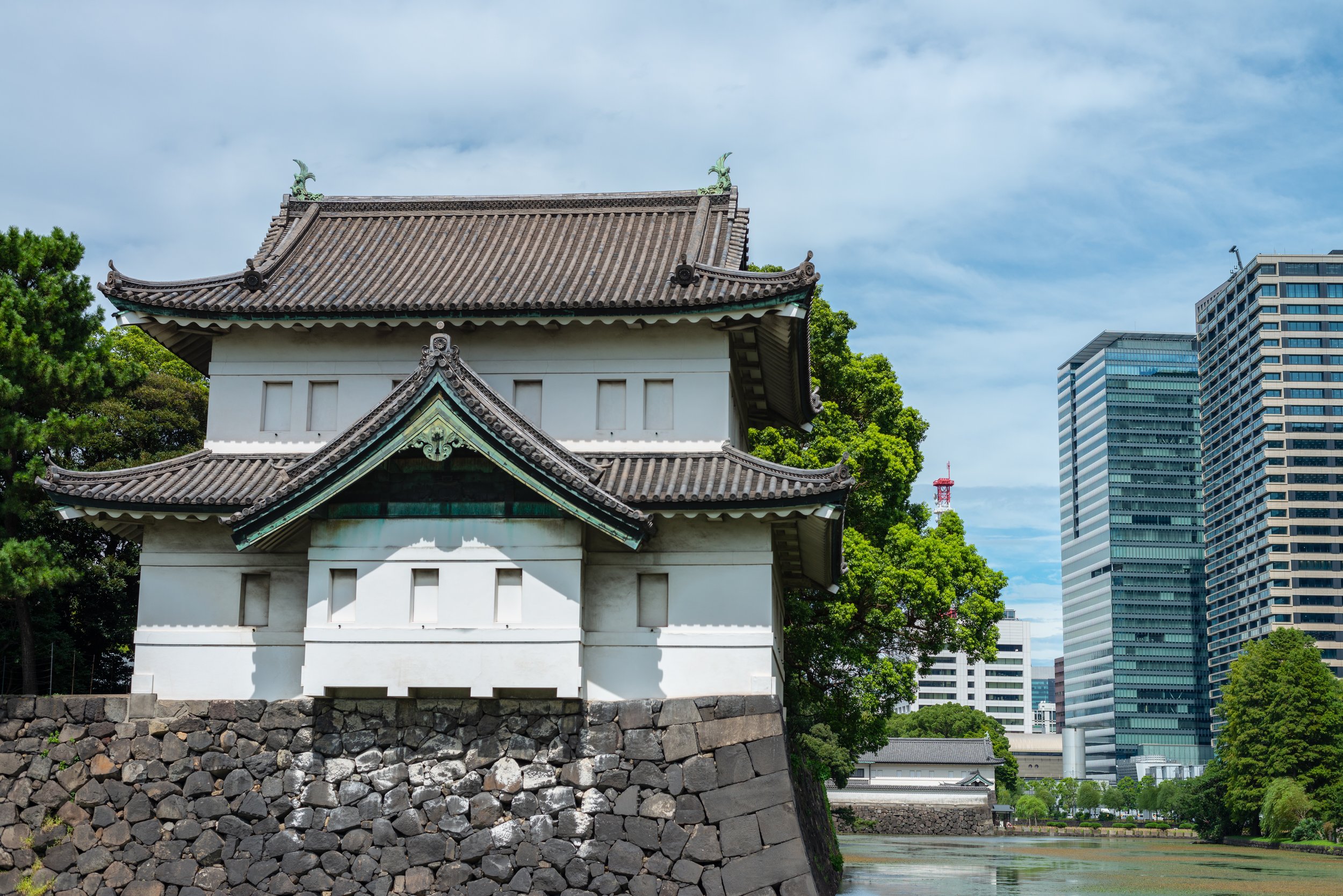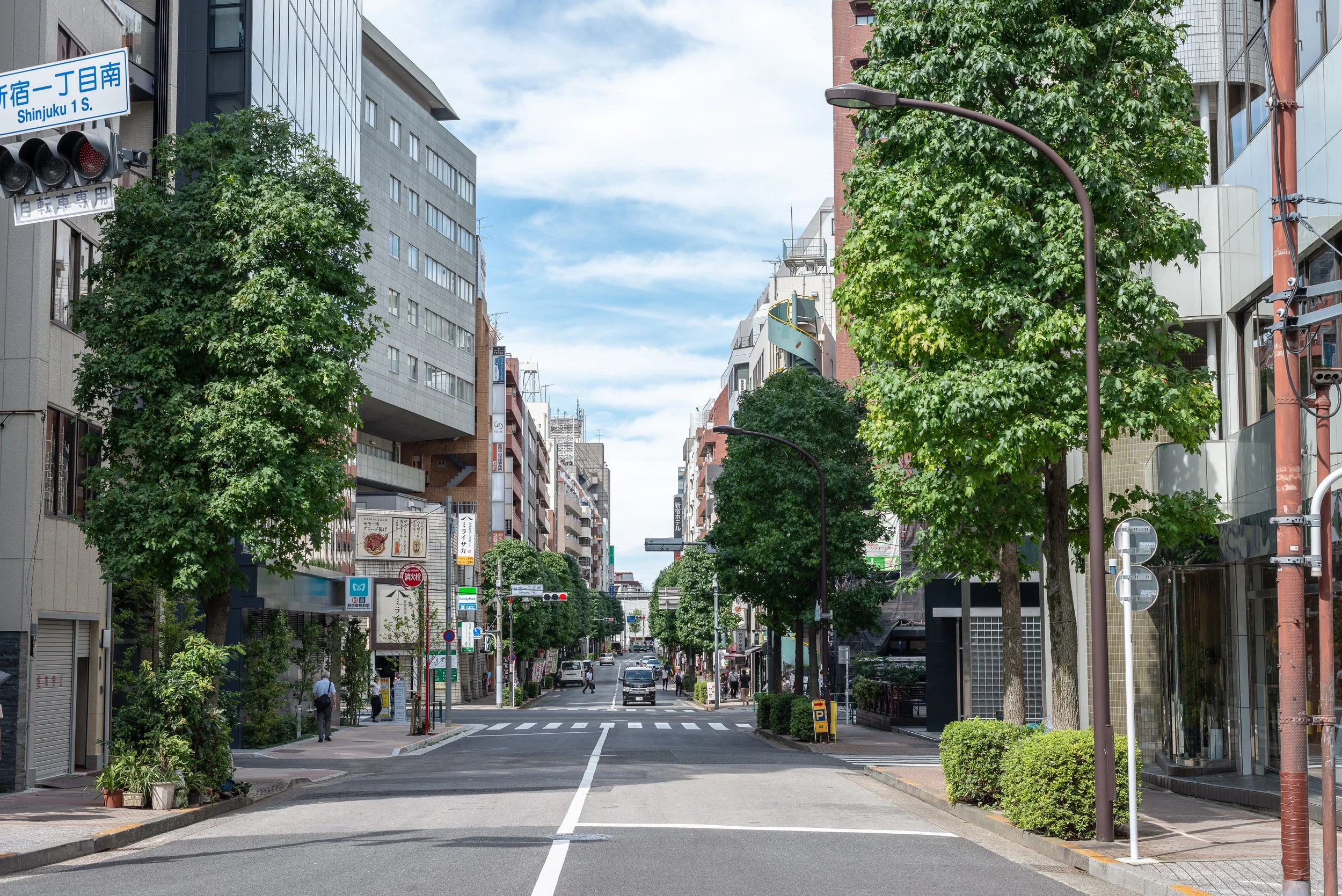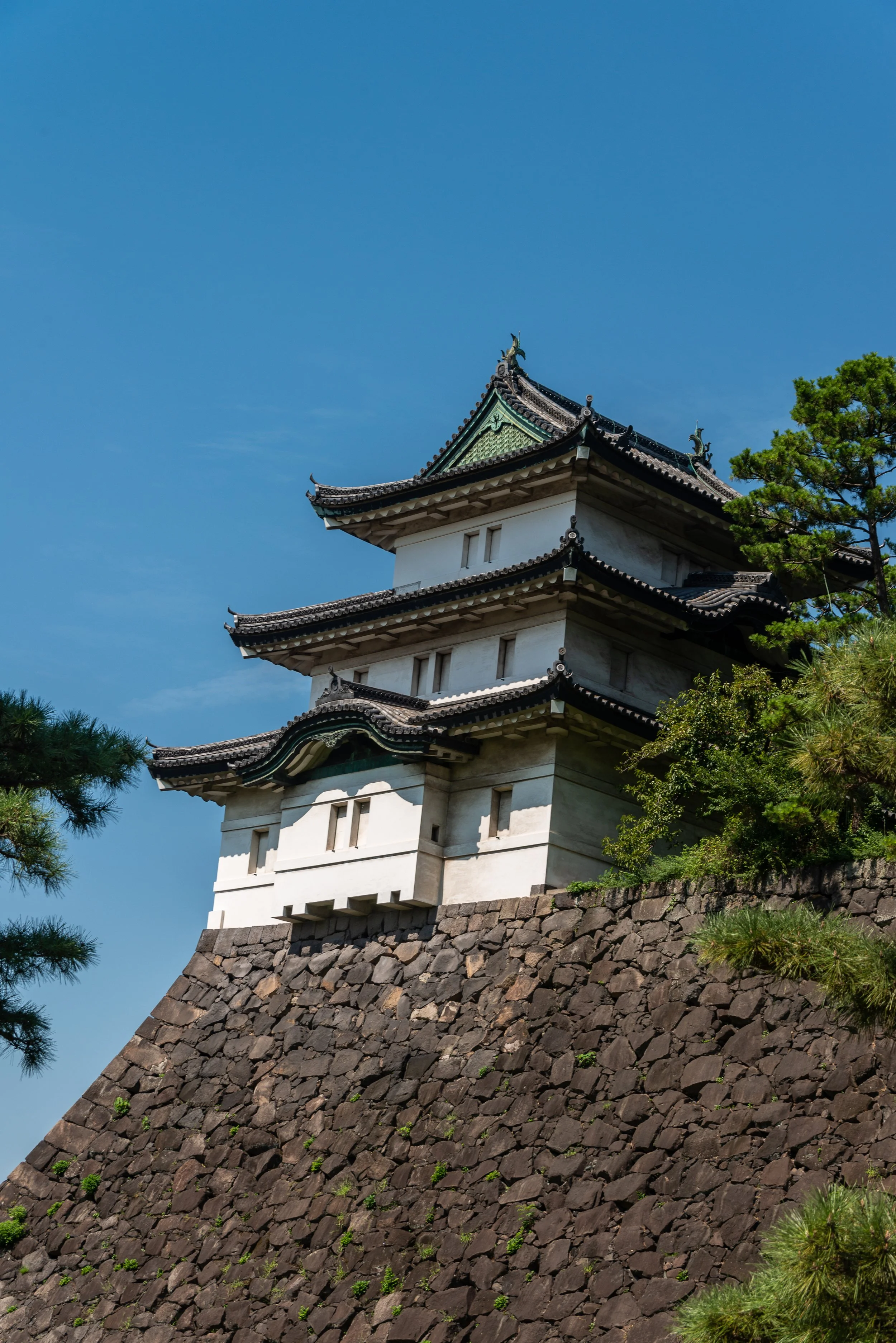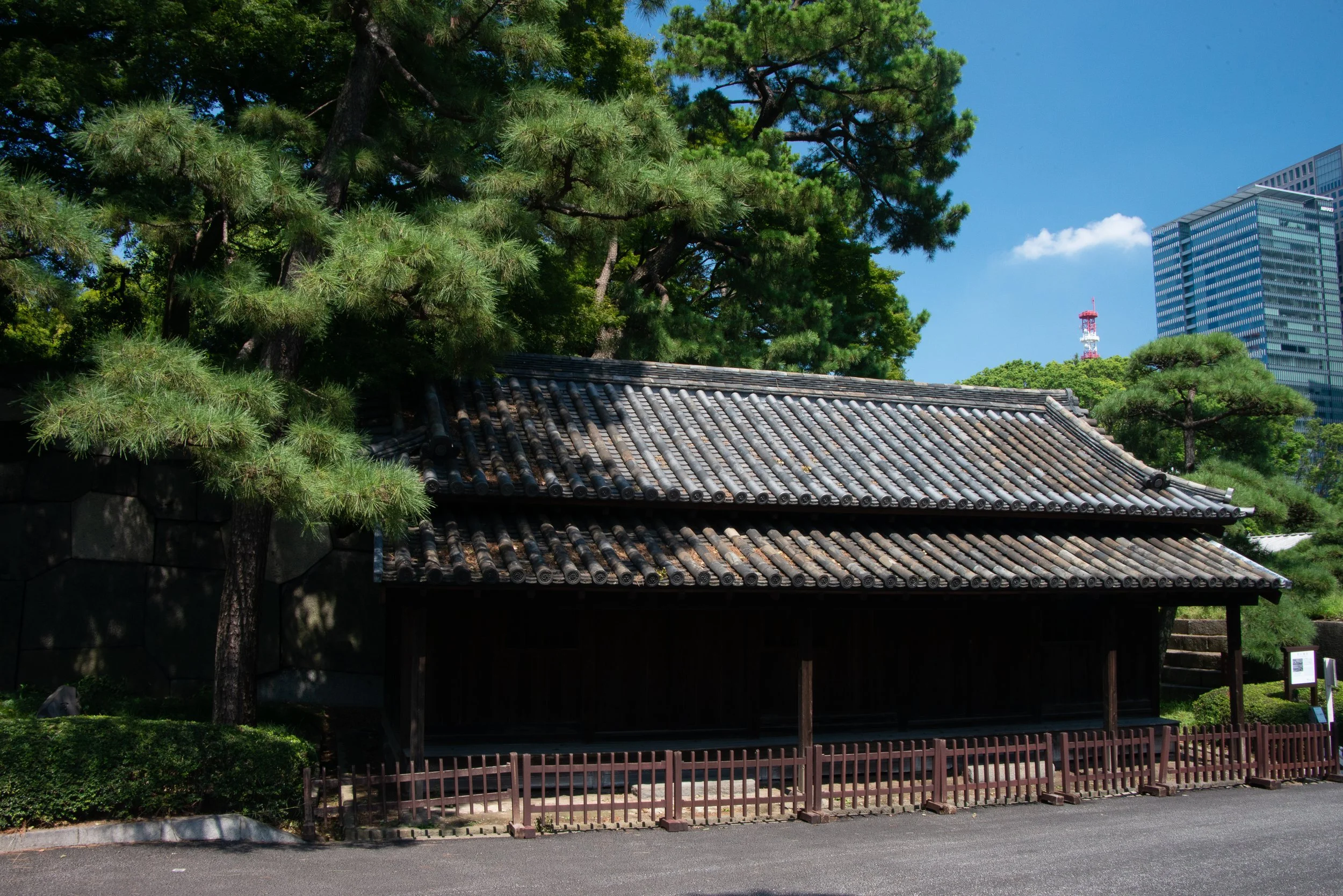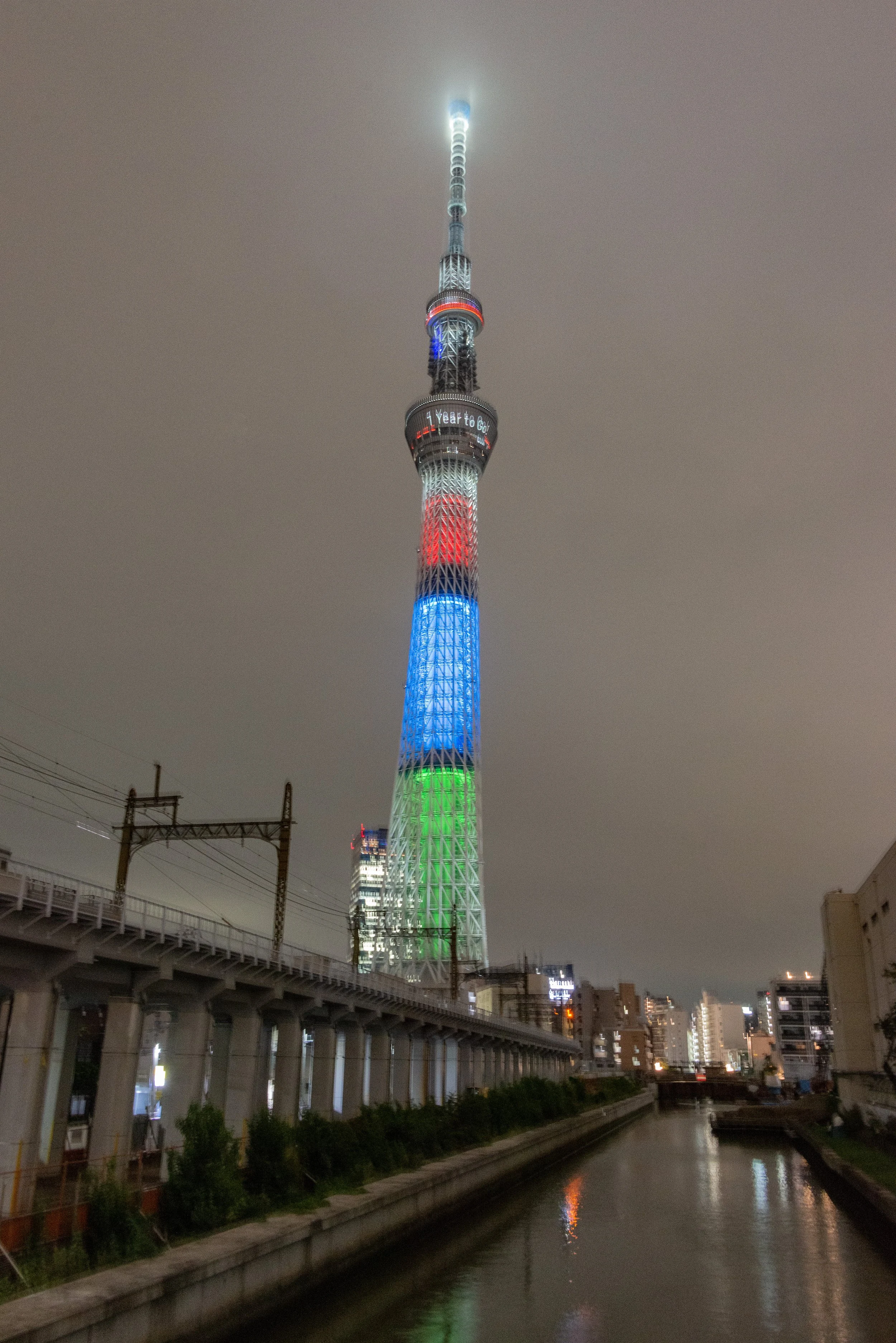Three days in Tokyo
First destination of the days. The imperial palace Tokyo, in the heart of the city.
During a four weeks trip around Asia, a friend and I spend 12 days in Japan. The itinerary I will show in another post, with some general information on travel planning and budget.
Day 0
We arrived around midday at Tokyo Narita airport. It was easier than we thought, Narita is one of the best-signposted airports I ever visited. Most of the employees speak good English, which is a rarity as we realized later. Surprisingly it was really empty and we were through immigration in no time and had our bags already waiting for us.
The first small shock for us in modern Japan was that we could not pay for train tickets with our credit cards. We had to search for an ATM (Everybody we asked pointed us to the same one), with the only one we could find was the one in the 7Eleven. Besides that everything was easy to find, especially with Apple Maps showing all train connections and prizes. Even with the express train, it takes around an hour to reach central Tokyo. We stayed at a hostel in a private room at Asakusa, one of the first stops in inner Tokyo.
As we entered the hostel the first Japanese tradition showed up. We had to take off our shoes before reaching the reception. They provided lockers for the shoes and some slippers. The slippers were one size and as a European, with shoe size 46 (US 12.5) they were far too small. We were lucky as a young English speaking western guy was working at the reception. In the next days, there always were only Japanese guys and girls working, which did not really speak English. Nevertheless, they were really really nice and helpful, you just had to get used to communicating through gestures and your smartphone.
First dinner in Tokyo. Some Ramen with oil. The oil part was a real problem, I never eat with chopsticks before and with the oil I ruined my shirt in 30 seconds.
As we just arrived after a 14 hour travel day from Germany via Rome to Tokyo, we relaxed a bit and wandered around the neighborhood on the sure for some drinks and something good to eat. Luckily Asakusa is a quite popular spot for tourist and they are restaurants and street food stalls everywhere. As we came more or less unprepared the above 40 °C temperatures and real high humidity hit us like a sledgehammer and we had to rescue ourselves into our room until the evening. Before we could actually look around the temple area of Asakusa and go out for a quick ramen dinner.
The small side roads in Asakusa were fantastic. All this lights and small details.
Day 1
First full day in Japan, lets start. We had a lonely planet Japan guide and relly good internet at the hostel. That´s why we decided to ignore both and just go for it and look where we end. First things we had to figure out: how to get around Tokyo? On that, we actually read some blogs and recommendations. There are a lot of options, the best in my opinion, at least when you spend a couple of days in Tokyo or Japan, are the rechargeable e-money cards. The biggest ones are the Suica card and Pasmo card. The Suica card is supplied by JR East, the official Japan rail company (for the east side of Japan). As far as I know, the card is mainly valid in the JR East area but can be used in some other JR areas, but not all. We took the Pasmo card, which was more luck than intention, the other ticket machine for the Suica card was occupied. It´s a similar system, you tap the card on the entrance and exit gate and automatically pay the fee. Additionally, you can pay with the cards at many shops and vending machines (they are everywhere, except when you need them). A problem we experienced is that at one point we lost track of how much we spend with it and how much is left on the cards. So to keep a better overview of our financial situation we only paid train fairs with it. Further, we could use the Pasmo card in Kyoto, Hiroshima and the Mt. Fuji area as well. (Got a little bit distracted with my story here)
One of the random streets we walked along on our way to Shibuya.
As we only wake up at around 10-11 am half of the day was already gone. We read in the news that a strong typhoon had hit Tokyo in the night and early morning. It was not really noticeable around noon, the humidity was still far too high for us, but the tree in front of the hostel was gone. The crazy part was, it was totally cleaned up and the patch of dirt was needly raked. We took the metro to the main station and walked to the imperial garden, which was closed on Mondays. So we took a train in the direction of Shinjuku but left the train a couple of stations early to wander around the neighborhood. Most public places (parks and stuff like that) were closed because it was Monday, which is a bit weird for European people.
As Shinjuku is most interesting at night we just had a quick stroll around and decided to walk in the direction of Shibuya crossing. We wanted to come back at night but never did. One reason to come back for sure… On the way to Shibuya, we found a great park, which actually had a temple in the middle. It is well known, but as we didn´t prepare we had no idea where we were.
The park around Meiji-temple is a lush green forest, as soon as you enter it you completely forget that your are in the middle of the city.
In the end, we figured out that it was Meiji-temple. Our first clash with Japanese temple traditions. It took some time to figure out everything, as most of the signs are only in Japanese again. As photographing was forbidden in the inner temple grounds, I cannot show any pictures here. But everybody who wants to experience the first glimpse of temple life, the Meiji-temple is great. they offer some great workshops and tours even some in English (we actually missed it).
Before every temple entrance there are places to wash yourself. (hand, arms and face only)
I really liked all the temples we visited in Japan. Their traditional wooden building style is just beautiful.
After we made like another 100 stops at every vending machine to buy new drinks, we finally reached Shibuya and Shibuya crossing. The crossing is as impressive as I imagined it. Nevertheless, I cannot really believe these 3000 people move over the crossing at each green light (in rush hour). But as I´m more used to empty landscapes, my pictures of the crossing and the surrounding areas with millions of people are a bit weird… We really enjoyed the weird and crowded lanes. The shops are a special thing for themself. It’s always a great idea to enter the craziest looking one and look at what happens inside.
As the day slowly came to an end we searched our way back to Asakusa to enjoy another dinner of great ramen. I took my camera and we explored the dark lanes around the Senso-Ji temple a bit further. The Japanese people have a great culture of meeting friends in the evening going out for some drinks and a small bite. And on a warm summer night, it´s just relaxing and calming in the streets of Tokyo.
Day 2
We started with a plan. We saw the day before that there are free tours around the imperial palace. They are on the principle of first come first serve, one tour started at 11.30 am and one at 1.30 pm. We took the 11.30 am, as you only tour the open grounds and don´t enter any buildings come prepared. The high temperatures and burning midday sun nearly killed us. Afterward, we drank like 3 l of water to come back to life. The tour itself is quite nice. You get to see some impressive buildings and get a lot of information about the imperial family and the history of the grounds.
Inside the imperial grounds.
A big advantage is that the tour is offered in many languages, the day we visited, there were Japanese, English, Spanish, Arabic as well as Thai (when I interpreted that right). To enter the imperial grounds you have to remember to bring your passport, otherwise, you are not allowed to enter. In the following, I will show some pictures of the imperial palace and the city seen from it. The highlight for sure is the massive palace itself with this interesting “pine cone” monument in front of it. I cannot remember how it was really called, but it is seen as a sign of peace and to remember the fallen for it. In total the tour takes around 2 hours, you get a small historic introduction and general information at a kind of visitor center before joining a tour group. The tour itself is around 2.2 km long. Additionally, to the length the walk has some steeper areas, all ways are paved, but at least in high summer the short steep sections are not to taken lightly. Our English group got separated a couple of times because of some people having trouble coming up.
It´s impressive how everything was absolutely clean and tidy. They need an army of gardeners to keep the giant grounds clean. Some people were cleaning the square in front of the palace itself, they all smiled and waved at the group and one of the gardeners hold his water hose in the air to produce a cooling water mist for us. He really saved the day for most of us in the burning sun.
As during our visit, the palace was preparing for the crowning of the new emperor part of the inner and outer grounds were closed off. Nevertheless, are the outer grounds (public park) nice to visit. You can sit in the shadow of a bamboo forest and eat some bento or next to a traditional styled pond and tea house.
Traditional tea house in the outer grounds of the imperial palace.
As a friend of mine, I was traveling with is judo fighter, we had to visit the Nihon Budokan (giant fighting arena) and the Kodokan (oldest and best known Judo school). They both are impressive to look at, but I had no sentimental value with them. I´m sorry my friend. On the other side, I really liked the lunch menu at the Tokyo Dome MLB Diner. I know not really Japanese, but a large burger with fries, drinks, and a salad for under 10€, you can´t say no to that.
In the late afternoon, we visited the Tokyo zoo, for the reason that we were already in the area and some people told us it is worth to see. I must admit that the zoo itself is nice, but with the temperatures, I felt really bad for animals normally living in a colder climate, like polar bears and penguins in the outside enclosures.
Still don’t know what it is, as the signs were all Japanese, but for sure scary. The bird was around 1.60m.
Staying in Asakusa the Tokyo Sky tree, one of many observatory decks in Tokyo, was within walking distance to us. Besides the Sky tree, Tokyo Tower and the Tokyo Metropolitan Government Building in Shinjuku (which is free, but we didn´t realize it before we went for the Sky tree) are the most popular ones to visit. From the buzzing streets of Asakusa, walking over the river you quite fast finde yourself in a dark quiet neighboorhood. A lot of small townhouses are standing side by side and suddenly it is completely quite. No sound telling you, you are in the multi-million citizen city.
The Sky tree in fog. A little bit blurry, I need to improve my night shot skills.
Underneath the Sky tree is a shopping mall. A fantastic place to look through the delicates of Japan. There is one floor (at least half of it) occupied by food stalls only selling sweets. Another half a floor is reserved for the more “hearty” food. You cannot try everything, therefore it´s just too much, but you can smell and see everything Japan has to offer.
For the way up, multiple ticket options are offered. We took a pass enabling us to visit both floors (25€). Looking back on it, we should have taken just a ticket for the lower deck. The upper deck, Tembo Gallery, is an art gallery. At the time we visited it showed an exhibition on “Snoppy in Space”, which did not really match our taste. The view on the other side is magnificent. Lights till the horizon, up there we realized how gigantic Tokyo really is. On a clear day, it should be possible to see Mt. Fuji. If you come in the evening, as we did, you most certainly don´t have to wait in line for the tickets or the elevator. The latter has a glass roof and door, which makes it a bit crazy to look out during climb and descent.
The views from the Sky tree at night towards Tokyo center.
Day 3
Starting early on our last full day in Tokyo, at least for us, we headed out around 7.30 am. We wanted to visit the famous Tokyo fish market with its tuna auction. When we arrived everything was already finished (8.30 am), nevertheless the area is worth a visit. Around the main fish market, the small streets are filled with fish stalls. I saw fish I saw never before in my life, and fish I wish I had never seen. Sometimes the animals and the deep oceans of this planet can produce really scary things. As both of us did not really like fish for breakfast (which we couldn´t avoid on the upcoming travel through Japan) for breakfast, we only did a quick tour around all the stalls and left a bit disappointed again for Ginza and Akihabara.
A calm space in the outer imperial gardens to relax after a hard day walking around the city.
In Ginza we saw shops with prizes in their windows, we most certainly never can afford. Looking around you can find all the top brands from around the world plus many other Japanese high-class brands I never heard about before (ok I’m a guy, I haven’t heard about most brands). One of the jewelers had a necklace in the window for a small amount of around 3 mio€. How much do you have to earn that you can afford a small necklace for that price?
Akihabara on the other side is a buzzing, crowed, totally weird shopping area. I think there is nothing in this world you can not find there. Shops with millions of electronic parts, cameras (a dream for me), mangas and anime. The colorful crazy mixture of all of that makes this place so fascinating. There are maid cafes and theme cafes of different big manga or gaming franchises. Everybody will find something here for his or her taste.
As we spend most of the day inside these crazy shops, debating on what some of these things are (and enjoying the air condition) our last full day in Tokyo was more or less a chill and shopping day. I’m sorry I don’t show any pictures of Ginza or Akihabara here, but for me, I feel uncomfortable if I take pictures in shops when I do not want to buy anything. So I leave the content of the shops to your imagination or your talent for googling.
In the upcoming weeks, I will publish some more stories from our days in Kyoto and the day trips with the Japan Rail pass to Hiroshima, Mt. Fuji and the Onsen town of Gero.
